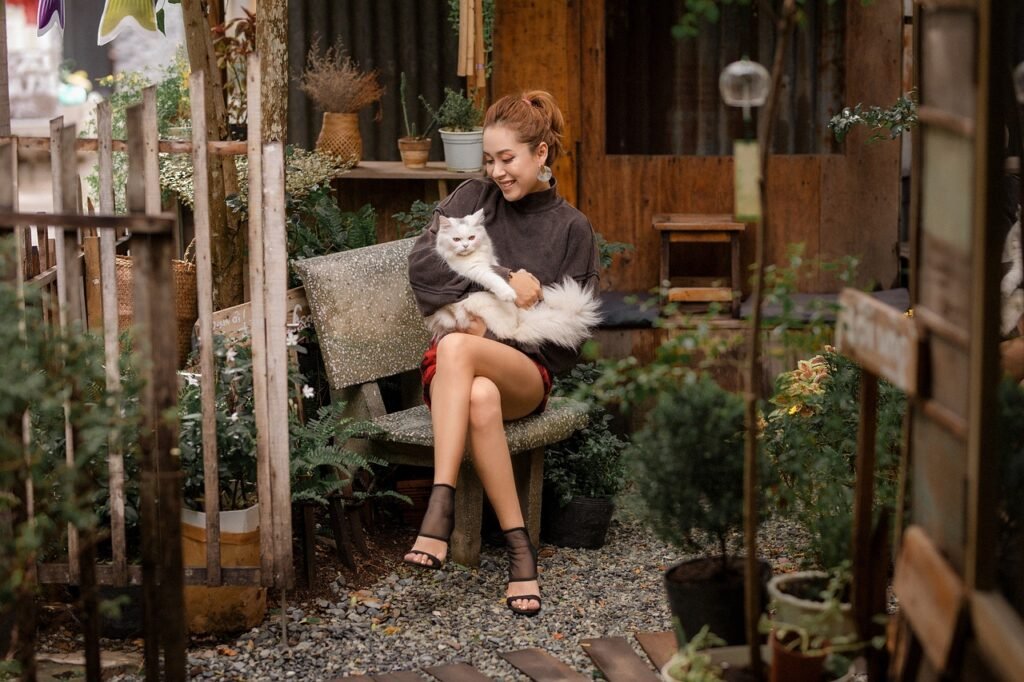
Cats are meticulous groomers, often spending a significant portion of their day licking and cleaning their fur. While this behavior is normal and healthy, it can sometimes lead to an uncomfortable byproduct known as hairballs. Hairballs, or trichobezoars, form when a cat ingests loose hair during grooming and it accumulates in the stomach, forming a dense mass. While occasional hairballs are a natural part of a cat’s grooming routine, frequent occurrences can indicate underlying issues or discomfort for your feline friend. In this article, we will explore effective strategies for hairball prevention in cats, ensuring your pet remains healthy and comfortable.
The Science Behind Hairball Formation
To effectively prevent hairballs, it’s crucial to understand how they form. When cats groom themselves, their tiny, hook-like structures on their tongues, called papillae, catch loose and dead hair. Most of this hair passes through the digestive tract without issue, but some can remain in the stomach, eventually forming a hairball. Cats then expel these hairballs by vomiting. While this process is generally harmless, if hairballs become too frequent or large, they can lead to more severe health issues, such as intestinal blockages.
Signs of Hairball Issues
Before delving into prevention strategies, let’s identify some signs that your cat might be experiencing hairball problems:
– Frequent coughing or gagging without producing a hairball.
– Excessive retching or vomiting.
– Constipation or diarrhea.
– Loss of appetite or lethargy.
If these symptoms persist, it’s advisable to consult a veterinarian to rule out more serious conditions.
Effective Hairball Prevention Strategies
Regular Brushing
One of the simplest and most effective strategies for preventing hairballs is regular brushing. By removing loose hair before your cat has a chance to ingest it, you can significantly reduce the amount of hair that could potentially form a hairball. For short-haired cats, a weekly brushing session may suffice, while long-haired breeds like Persians or Maine Coons might require daily grooming. Choose a brush suitable for your cat’s coat type to ensure maximum effectiveness.
Dietary Adjustments
Diet plays a crucial role in managing and preventing hairballs. Consider the following dietary adjustments:
– **High-Fiber Diets:** Fiber helps move ingested hair through the digestive tract more efficiently. Look for cat foods specifically formulated for hairball control, as they typically contain higher fiber content.
– **Hydration:** Ensure your cat has access to fresh water at all times. Proper hydration aids digestion and can help prevent hair from accumulating in the stomach.
– **Laxatives and Lubricants:** Some veterinarians recommend specialized hairball lubricants or laxatives that help hair pass through the digestive system more easily. Always consult your vet before introducing any new products to your cat’s routine.
Regular Play and Exercise
Encouraging your cat to play and exercise regularly can also help in hairball prevention. Physical activity stimulates the digestive system, helping ingested hair pass through more efficiently. Provide your cat with interactive toys, climbing structures, or dedicate time for active play sessions each day.
Use of Hairball Products
Several commercial products are available specifically for hairball prevention. These include:
– **Hairball Treats:** Many pet stores offer treats formulated to reduce hairball formation. These treats often contain added fiber or lubricants to assist in digestion.
– **Hairball Control Shampoos:** Regular bathing with a hairball control shampoo can reduce the amount of loose hair on your cat, especially for long-haired breeds. Ensure you choose a cat-safe shampoo and follow proper bathing techniques to avoid causing stress.
Regular Vet Check-Ups
Routine veterinary visits are vital for maintaining your cat’s overall health. Your vet can assess your cat’s condition, provide professional grooming advice, and recommend appropriate hairball prevention strategies. Regular check-ups also help detect any potential health issues early on, ensuring your cat’s well-being.
Managing Hairballs in Multi-Cat Households
If you have multiple cats, hairball prevention can become more challenging. Here are some additional tips:
– **Grooming Routine:** Establish a grooming routine for each cat based on their coat type and grooming needs. Use separate grooming tools for each cat to prevent the spread of parasites or skin conditions.
– **Monitor Cat Interactions:** Observe how your cats interact with each other during grooming. Some cats may over-groom others, leading to increased hair ingestion.
– **Provide Multiple Litter Boxes:** Ensure you have enough litter boxes to accommodate all your cats, as stress or competition over resources can exacerbate hairball issues.
When to Seek Veterinary Assistance
While most hairballs are harmless, certain situations require immediate veterinary attention:
– **Persistent Vomiting:** If your cat is vomiting frequently or unable to produce a hairball, seek veterinary advice.
– **Change in Bowel Movements:** Constipation or diarrhea that does not resolve promptly can indicate a blockage or other health concerns.
– **Lethargy or Loss of Appetite:** If your cat appears unusually tired or refuses to eat, it may be a sign of an underlying issue.
Conclusion
Hairballs are a common aspect of life with cats, but they need not be a significant concern if managed appropriately. By implementing a combination of regular grooming, dietary adjustments, exercise, and the use of specialized products, you can effectively reduce the incidence of hairballs in your feline companion. Remember, every cat is unique, so it may take some time to find the perfect combination of strategies that works best for your pet. Consistency and attentiveness to your cat’s individual needs will go a long way in ensuring a happy, healthy, and hairball-free life.
Always consult with your veterinarian if you have any concerns or notice changes in your cat’s behavior or health. With the right approach, you can help your cat enjoy a comfortable and fulfilling life without the discomfort of frequent hairballs.
“`
#ChatGPT assisted in the creation of this article.






